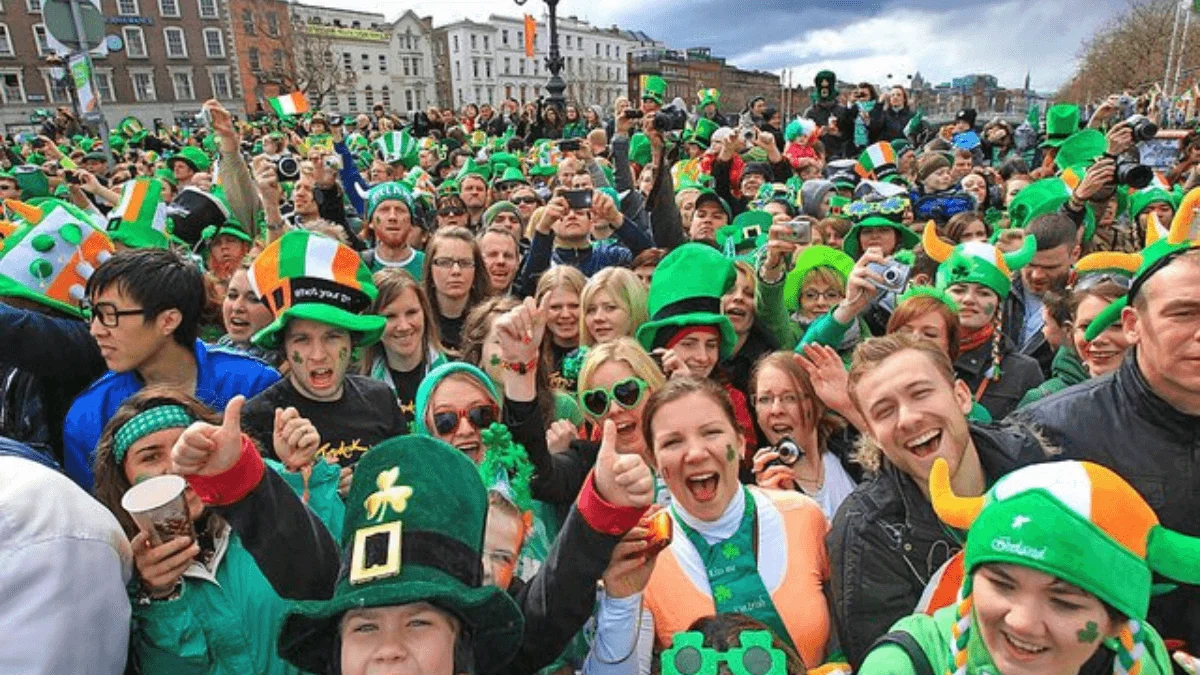St. Patrick’s Day, celebrated every year on March 17th, honors Ireland’s patron saint. It originated in Ireland but is now celebrated globally, especially in the U.S., where it’s marked by community spirit, parades, and traditions.
In this post, we’ll explore the history, celebrations, and cultural significance of St. Patrick’s Day in America, providing insights for both Irish descendants and enthusiasts.
History of St. Patrick’s Day in America
St. Patrick’s Day was first celebrated in America in 1737 by Irish immigrants in Boston, Massachusetts, to remember their homeland while embracing their new life in America. Over the years, the celebration of St. Patrick’s Day has evolved from a small gathering of Irish immigrants to a nationwide celebration.
In the 19th century, with a large number of Irish immigrants during the Great Famine, St. Patrick’s Day became a symbol of Irish heritage and culture. Parades, wearing of green attire, and public celebrations became a common way to express Irish pride.
Today, St. Patrick’s Day is celebrated by millions of people across America, regardless of their ethnic background. It serves as a testament to America’s ability to absorb and adapt various cultural traditions from around the world.

St. Patrick’s Day Celebrations in America
St. Patrick’s Day in America is celebrated with much enthusiasm and joy. The day is marked by several festive traditions and customs that have evolved.
1. Parades and Public Festivities
In America, St. Patrick’s Day is celebrated with much fanfare. The day is marked by city-wide parades, particularly in cities with large Irish-American populations like New York, Boston, and Chicago. These parades draw millions of spectators each year and are a highlight of the celebrations.
2. Wearing of Green and Shamrocks
Many Americans, regardless of their Irish heritage, participate in the festivities by wearing green and adorning themselves with shamrocks. In some places, people even go as far as dyeing rivers or streams green as part of the celebrations.
3. Traditional Irish Foods and Beverages
Traditional Irish foods, such as corned beef and cabbage, are enjoyed on St. Patrick’s Day. Some cities also host pub crawls that celebrate Irish beverages, making it a day of feasting and merriment.
4. Music and Dance in St. Patrick’s Day Celebrations
This section will delve into the integral role of traditional Irish music and dance in St. Patrick’s Day celebrations. From lively pub music sessions to vibrant displays of Irish step dancing, we’ll explore how these art forms contribute to the festive atmosphere.
5. Religious Observances on St. Patrick’s Day
While St. Patrick’s Day is widely celebrated with parades and parties, it also retains its roots as a religious holiday. Various religious observances that take place on St. Patrick’s Day, including church services and the wearing of green, which traditionally symbolizes Ireland and the Catholic faith.
6. Increase in economy and tourism on St. Patrick’s Day
The festivities attract tourists, both domestic and international, leading to increased tourism revenue.
This surge in visitors boosts sales of St. Patrick’s Day-related merchandise, from clothing to decorations, contributing to the local economy.
Local businesses, especially those in the hospitality sector, such as restaurants and pubs, see a substantial increase in customers, further boosting economic activity.
Join the Celebrations in Your City
St. Patrick’s Day is celebrated with enthusiasm across various cities in America. Here are some cities where you can join in the festivities:
| City | Event Highlights |
| Boston, Massachusetts | Hosts one of the world’s biggest St. Patrick’s Day celebrations with a parade featuring Irish bands, dancers, bagpipers, and floats. The city also offers great Irish entertainment. |
| Washington, D.C. | Hosts the legendary Shamrock Festival, an all-day event featuring Irish bands, dancers, games, and other activities. Local Irish pubs offer music and traditional Irish food after the parade. |
| Chicago, Illinois | Known for its unique celebration where the Chicago River is dyed emerald green. The city hosts a parade that includes floats, bagpipers, bands, and Irish step dancers. |
| New York City | Hosts the biggest St. Patrick’s Day celebration in the world, attracting about 2 million spectators for the parade and accompanying festivities. |
| Savannah, Georgia | Holds St. Patrick’s Day celebrations for several days, culminating with the St. Patrick’s Day Parade on March 17. The city also dyes the Forsyth Park Fountain green. |
Significance of St. Patrick’s Day in American Culture
St. Patrick’s Day holds a special place in American culture. It is more than just a day of wearing green and watching parades; it is a celebration of Irish heritage and a testament to the multicultural fabric of America
1. Celebration of Irish Heritage:
For the Irish-American community, St. Patrick’s Day is a chance to celebrate their ancestral roots. It’s a day to honor Irish traditions and history while also acknowledging the contributions of Irish-Americans to the United States.
2. Symbol of American Multiculturalism:
St. Patrick’s Day is also a symbol of American multiculturalism. The widespread celebration of a holiday that originated in another country speaks volumes about America’s openness to different cultures and traditions. It shows how cultural practices from around the world have been embraced and integrated into American society.
3. Community and Unity:
St. Patrick’s Day brings people together, regardless of their ethnic background. The communal celebrations foster a sense of community and unity, reinforcing the idea that despite our different backgrounds, we are all part of one society.
In conclusion, St. Patrick’s Day is a vibrant and joyful celebration in America. It’s a day that honors Irish heritage, celebrates American multiculturalism, and brings people together in a spirit of unity and community.
Conclusion
St. Patrick’s Day is a vibrant celebration that has become an integral part of American culture. From its humble beginnings as a small gathering of Irish immigrants, it has grown into a nationwide celebration that brings together people of all backgrounds. Whether it’s the lively parades, the wearing of green, or the communal feasts, St. Patrick’s Day in America is a testament to the country’s multicultural spirit and its ability to embrace and integrate different cultural traditions.
The celebration of St. Patrick’s Day also serves as a reminder of the significant contributions of the Irish-American community to the United States. It’s a day to honor Irish heritage, celebrate American multiculturalism, and foster a sense of community and unity among people.
FAQs:
St. Patrick’s Day was first celebrated in America in 1737 by Irish immigrants in Boston, Massachusetts, as a way to commemorate their heritage.
Typical traditions include city-wide parades, wearing green attire, adorning with shamrocks, and public celebrations. Traditional Irish foods are also enjoyed.
Parades are a major part of St. Patrick’s Day celebrations in America, particularly in cities with large Irish-American populations. They draw millions of spectators each year and are a highlight of the celebrations.
Traditional Irish foods enjoyed on St. Patrick’s Day include corned beef and cabbage, shepherd’s pie, and Irish soda bread.
Wearing green and using shamrocks are symbols of Ireland and the Catholic faith. They have become integral parts of the St. Patrick’s Day celebrations.
Some American cities, like Chicago, have a tradition of dyeing their rivers green for St. Patrick’s Day. This is usually done using environmentally safe dyes.

